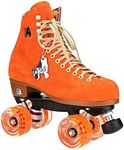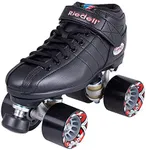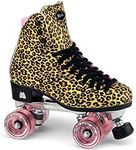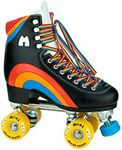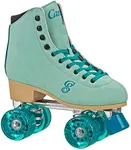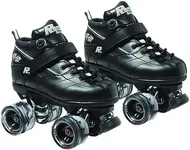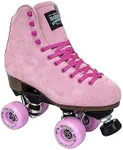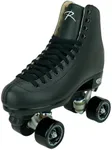Buying Guide for the Best Roller Skates
Choosing the right roller skates can make a big difference in your comfort, safety, and enjoyment, whether you're skating for fun, fitness, or sport. It's important to think about where and how you'll use your skates, your experience level, and your personal preferences. By understanding the main features and how they affect your skating experience, you can find a pair that fits your needs and helps you get the most out of your time on wheels.Boot TypeThe boot is the part of the skate that wraps around your foot and ankle. There are two main types: high-top and low-top. High-top boots offer more ankle support, which is great for beginners or those who want extra stability, especially for artistic or recreational skating. Low-top boots allow for more ankle movement and are often preferred for speed or jam skating. Think about your skill level and the type of skating you want to do when choosing the boot type.
Wheel Hardness (Durometer)Wheel hardness is measured by a durometer rating, usually shown as a number followed by an 'A' (like 78A or 98A). Softer wheels (lower numbers, like 78A-85A) provide more grip and a smoother ride, making them ideal for outdoor surfaces. Harder wheels (higher numbers, like 88A-101A) are faster and better for indoor rinks, but they can feel slippery outside. Consider where you'll skate most often—outdoors or indoors—to pick the right wheel hardness for your needs.
Wheel SizeWheel size is measured in millimeters and affects how your skates handle. Larger wheels (62mm and above) roll faster and handle rough surfaces better, making them good for outdoor skating or covering longer distances. Smaller wheels (59mm and below) are more agile and easier to control, which is helpful for tricks or indoor skating. Think about whether you want speed and smoothness or maneuverability when choosing wheel size.
BearingsBearings are the small parts inside the wheels that let them spin. They are often rated by the ABEC scale (like ABEC-3, ABEC-5, ABEC-7), but this scale isn't the only thing that matters. Higher numbers can mean smoother and faster spinning, but for most casual skaters, any decent bearing will work well. If you want to go fast or skate long distances, look for higher-rated or quality bearings. For beginners or casual use, standard bearings are usually fine.
Plate MaterialThe plate is the part under the boot that holds the wheels and trucks. Plates are usually made from plastic (nylon) or metal (aluminum). Nylon plates are lighter and often less expensive, making them good for beginners or recreational skaters. Aluminum plates are stronger and more responsive, which is better for advanced skaters or those who want more control. Consider your experience level and how much performance you want from your skates.
Fit and SizingGetting the right fit is crucial for comfort and safety. Roller skates should fit snugly but not be too tight, with enough room to wiggle your toes. Sizing can vary between brands, so always check the size chart and, if possible, try them on before buying. If you plan to wear thick socks or have wide feet, you may need to adjust your size choice. A good fit helps prevent blisters and gives you better control while skating.
Closure SystemThe closure system refers to how the skates are fastened, such as laces, Velcro straps, or buckles. Laces offer a customizable fit and are common on most skates. Velcro and buckles can make it quicker and easier to put skates on or take them off. If you want a secure, adjustable fit, look for skates with a combination of laces and straps. Think about what feels most comfortable and convenient for you.

